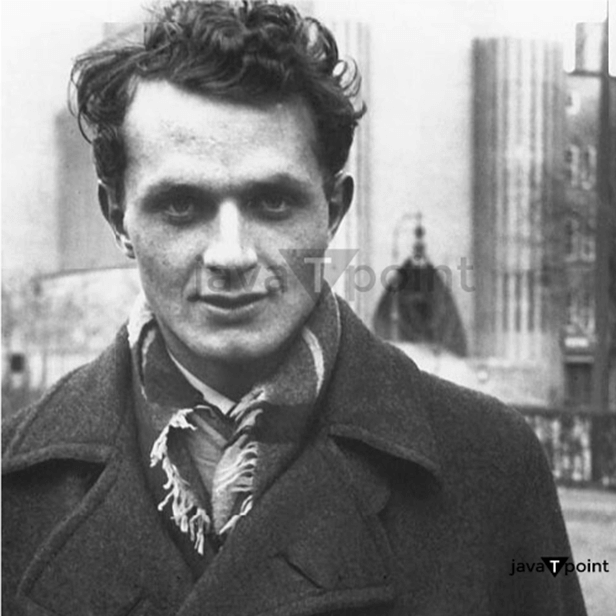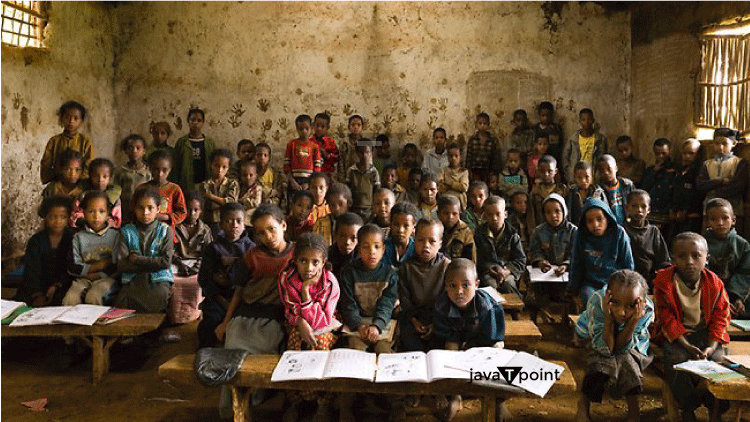An Elementary School Classroom in a Slum SummaryAn Elementary School Classroom in a Slum is a work of poetry written by English poet and essayist Stephen Spender. It focuses on depleted and degraded slum conditions. People living in slums face numerous challenges when it comes to finding basic needs, including food, clothing, and even education. Children, which are typically considered the future of any community, don't receive the proper care and attention in the slums. They lack health, education, infrastructure, and so on. 
Spender exposes the situation by describing in detail the conditions of a classroom in an elementary school as well as the conditions of pupils in there. Spender says that any donations for the school's needs aren't enough to provide a better future for children as the only place they have access to is the miserable slum they live in. The poet appeals to everyone's interest in the life of the children who live in the slums in the Tyrolese Valley of the Austrian Alpine Province. They are deprived of social and economic resources and are extremely slim, skinny, thin, and possess an unattractive appearance. Because they are weak, hungry, and undernourished, they cannot experience the fruits of their lives. The author appeals to those who are considered educated to attempt to bring about changes using their knowledge and power to improve the lives of these children. He expresses concern about those living in slums to be given the same opportunities for them to succeed in every aspect of life. He also aims to eliminate inequality and the burden of poverty. Summary of An Elementary School Classroom in a SlumThe poet describes the look of students in a classroom of an elementary school in a slum. He says that their faces are far from the gusty waves. Contrary to the powerful waves that can be seen on the beach, these kids have a weak, timid characters and lack confidence in their own abilities. This illustration highlights the difference between the children of prosperous families and those who grew up in the slums. Their origins determine their destiny. Their hair is void of nutrients, just like mildewed plants, and is scattered across their faces. There is a tall girl with her head bent down, which signifies malnutrition and lack of confidence. The picture shows the effects of poor nutrition and family problems because of being in poverty. It is difficult for her to learn since she's consumed by anxiety and stress. The boy in the classroom is slim, and he is not carrying much body weight. The eyes of the boy look similar to that of a rat- sneaky and hungry. It is an indication of the poor financial conditions that exist in the neighborhood. One student who's reading a poem is experiencing slow development, and the sole item he can claim through inheritance is his father's gnarled disease. The student at the very back of the class is lost in a dream of squirrels playing with the trees. His mind is not in the class but instead in an environment full of trees in which squirrels play. The poet gives an explanation of the room that students sit. The walls appear to be sour cream-colored. In the absence of maintenance and constant contact with dirt and dust, the hue of the walls has faded. The receipts for donations are visible on the wall. It is evident that the school has no funding and is based on the funds that are given to them by charitable donations. Pictures of Shakespeare as well as the Tyrolese Valley, can be seen in the classroom. According to the poet, these images add no value to the education of children. The bald head of Shakespeare is the shape of a dome, which represents civilization. The poet uses the phrase "riding through all cities" to refer to the influence of the colonization process over other countries, which results in exploitation. The entire mention of Shakespeare can also be a sign of British colonialism. The Tyrolese Valley is a location that children can only think of seeing and will never come true. The poet presents a second paradoxical stance. There is an outline of the globe that is displayed on the walls. But for the children of slums, the only place that they are able to access is that which lies outside their window, which is the slum. There is no hope for them, and their home is like an elongated street closed by a lead-filled sky. The threat of pollution and the uncertainty of living in urban slums have reduced the idea of a clear and blue sky to an engulfing threat that hangs over their heads. They live far away from the shores of rivers and capes, and children in slums are not aware of the names of the stars and constellations. 
Shakespeare is a symbol of injustice since the concept of the idea of civilization seems farfetched for children living in slums, and they are merely small and unimportant compared to the modern world of civilization. The map, with all its images of the sun and ships, makes them realize how remote and unattainable these things are. Because they can't afford many good things, they are enticed to steal them. The lives of these children are miserable. They reside in tiny homes with no room because everything is squeezed into tiny spaces. The poet reminds us that they aren't able to hope and their lives are bleak, like being in continuous fog or sleeping for hours on end. Their bodies look like piles of waste from industrial production. They're skinny and have prominent bones, and they wear glasses that are composed of steel and mended glass. They spend all their time in space seems as bleak as fog. Therefore, the poet recommends that their maps in classes be filled with slums since slums are the only location they'll ever see. The poet recommends against giving unrealistic expectations to youngsters unless the lawful authorities break the cycle of chaos in the lives of these children. Instead of having foggy windows that allow children only to view the slum, the poet calls to create an environment where the children of slums can have dreams of seeing the world via their windows. Every town must be considered for development. Children should have the opportunity to enjoy the sunshine, lush fields, and beaches. The children should be able to access an appropriate education to reach higher levels of achievement and create history. ConclusionAn Elementary School Classroom in a Slum closes on a rousing note with a call to the officials. The people living in the slums are in a position to have a more positive and brighter future only if the path of their development is made easier with the enforcement of laws and the granting of the rights to live a decent existence by the authorities as well as the police and other visitors. Children in slums should have access to education as well as access to the bare essentials of living. If they are able to have the joys of childhood without exploitation, poverty, and abuse, they'll be able to make a difference in their own lives, as well as work for the betterment of the community that they live in.
Next TopicFather to Son Summary Class 11 English
|
 For Videos Join Our Youtube Channel: Join Now
For Videos Join Our Youtube Channel: Join Now
Feedback
- Send your Feedback to [email protected]
Help Others, Please Share









